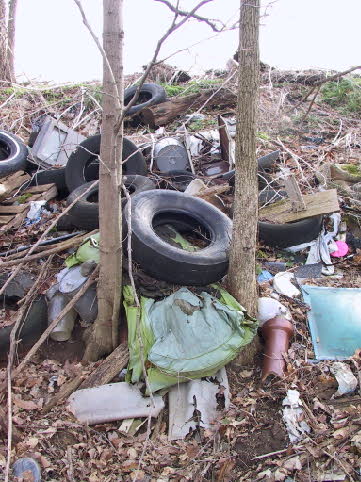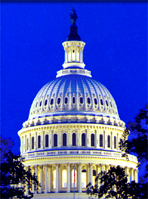Value Assurance and Diminution of Property Value Claims
By admin on November 18, 2008
 People living near manufacturing plants increasingly seek judicial solutions to environmental issues. In the wake of an environmental incident (such as a release of contaminants into the air or groundwater), fear and suspicion hinder constructive dialog and problem solving by manufacturers and their communities. Environmental issues, as much as any other corporate concern, tend to have a ripple effect, often causing repercussions with far-reaching impact on company business. An accidental release may result in adverse public relations, worker safety disputes, boycott of company products in the market place, adverse regulatory consequences and bad feeling in the community. How a company responds to media attention at the outset has an important effect on how the community, including elected officials, health authorities, regulatory agencies and prospective jurors, react to the issues presented. Accordingly, a company must plan in advance how it will respond to an environmental crisis and what steps it will take to minimize the fallout from such a crisis.
People living near manufacturing plants increasingly seek judicial solutions to environmental issues. In the wake of an environmental incident (such as a release of contaminants into the air or groundwater), fear and suspicion hinder constructive dialog and problem solving by manufacturers and their communities. Environmental issues, as much as any other corporate concern, tend to have a ripple effect, often causing repercussions with far-reaching impact on company business. An accidental release may result in adverse public relations, worker safety disputes, boycott of company products in the market place, adverse regulatory consequences and bad feeling in the community. How a company responds to media attention at the outset has an important effect on how the community, including elected officials, health authorities, regulatory agencies and prospective jurors, react to the issues presented. Accordingly, a company must plan in advance how it will respond to an environmental crisis and what steps it will take to minimize the fallout from such a crisis.
A Value Assurance Plan should be considered as one significant component of a corporate response to homeowner concerns over property values. A Value Assurance Plan, sometimes referred to as a "VAP", is a contractual promise to assure homeowners that the equity in their homes will be protected if they sell their homes and realize less than full value from the sale due to an environmental concern in the community. A VAP promises to compensate those homeowners who sell (or have sold) their homes by paying them the difference between the property’s sale price and its fair market value prior to the discovery of possible contamination. As part of the arrangement, the company may also offer to reimburse the closing costs and the moving expenses of residents who leave the community. Often, the reassurance that a VAP provides is successful in preventing the panic selling (the rush to the door) that often strikes communities shortly after public disclosure of an environmental problem.
To implement a Value Assurance Plan, a company needs creative lawyering and a consultant who has a strong understanding of the economic dynamics driving the property diminution claims and who can accurately assess the potential exposure to the company of taking alternative courses of action, including taking no action at all. Two such high qualified consultants are Jerry Dent at Alvarez & Marsal in Birmingham, Alabama, and Dwight Duncan at EconLit in Phoenix, Arizona.



 Nothing in §107(a)(4)(B) references “voluntary” cleanups, and nothing in that section restricts its application to “voluntary” cleanups or actors. Sections 107(a) and 113(f) of CERCLA allow private parties to recover expenses associated with cleaning up contaminated sites. Similarly, nothing in Atlantic Research and its progeny restricts the application of cost recovery actions under CERCLA §107(a)(4)(B) to “voluntary” cleanups. If that is the case, what is the basis for the contention that only PRPs that perform cleanups voluntarily are entitled to pursue §107 cost recovery claims?
Nothing in §107(a)(4)(B) references “voluntary” cleanups, and nothing in that section restricts its application to “voluntary” cleanups or actors. Sections 107(a) and 113(f) of CERCLA allow private parties to recover expenses associated with cleaning up contaminated sites. Similarly, nothing in Atlantic Research and its progeny restricts the application of cost recovery actions under CERCLA §107(a)(4)(B) to “voluntary” cleanups. If that is the case, what is the basis for the contention that only PRPs that perform cleanups voluntarily are entitled to pursue §107 cost recovery claims? In its precedent breaking decision in
In its precedent breaking decision in  On September 19, 2008, President Bush signed S. 2450 into law and new
On September 19, 2008, President Bush signed S. 2450 into law and new  Whether electricity supplied to a homeowner by the local electric utility is viewed as a “product” or a “service” may have significant ramifications in litigation. If providing electricity constitutes a “product”, injured plaintiffs can seek recovery under a theory of strict liability. If it is not a product, the plaintiff would have to demonstrate the electric utility failed to use reasonable care. In a recent Connecticut case,
Whether electricity supplied to a homeowner by the local electric utility is viewed as a “product” or a “service” may have significant ramifications in litigation. If providing electricity constitutes a “product”, injured plaintiffs can seek recovery under a theory of strict liability. If it is not a product, the plaintiff would have to demonstrate the electric utility failed to use reasonable care. In a recent Connecticut case,  Lost in the learned treatises written in the wake of the Rhode Island Supreme Court’s decision in
Lost in the learned treatises written in the wake of the Rhode Island Supreme Court’s decision in